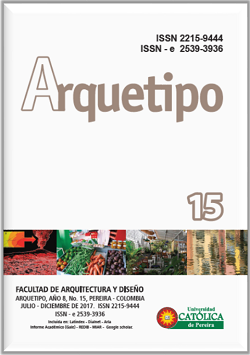De la percepción a la imitación en la accesibilidad de adultos mayores en interfaces web
DOI:
https://doi.org/10.31908/22159444.3679Palabras clave:
Tecnologías de apoyo, Aprendizaje vicariante, UsabilidadResumen
Los adultos mayores, quienes son una población en crecimiento en Colombia y el mundo, están usando cada vez más interfaces webs y otras tecnologías digitales.Este artículo reporta un estudio exploratorio que identificó las experiencias e interacciones con doce adultos mayores, con quienes se realizó un grupo focal o una prueba de usabilidad y entrevista. Además de identificar tipos de contenido en la web de los adultos mayores (en su orden son: salud, entretenimiento —música—, y noticias), se detectó el aprendizaje vicariante o por imitación. Al observar una persona similar realizando actividades, el adulto mayor como observador también percibe la capacidad de ejecutarlas por imitación (autoeficacia).
Referencias
Bandura, A. (1986). Social foundations of thought and action: A social cognitive theory. Englewood Cliffs, NJ: Prentice Hall.
Bandura, A. (1997). Self-efficacy: the exercise of control. New York: Freeman.
Bautista, N. (2011). Proceso de la investigación cualitativa: epistemología, metodología y aplicaciones. México, D. F.: Editorial Manual Moderno.
Berners-Lee, T., & Fischetti, M.(1999). Weaving the Web. Nueva York: Harper Collins Publisher.
Carmichael, A. (1999). Style guide for the design of interactive television services for elderly viewers. Independent Television Commission. Winchester: Kings Worthy Court.
Christensen, H., Korten, A., Jorm, A., Henderson, A., Scott, R., & Mackinnon, A, (1996). Activity levels and cognitive functioning in an elderly community simple. Age Ageing, 25(1), 72-80.
Cooper, A., Reimann, R., & Cronin, D. (2007). About Face 3: The Essentials of Interaction Design. Nueva York: Wiley Publishing.
Cotec (1997). Informe Cotec 1997. Tecnología e innovación en España. Fundación Cotec para la innovación tecnológica. Recuperado de http://vufind.uniovi.es/record1234023
DANE (Departamento Nacional de Estadística). (2005). Población y demografía. Proyecciones de la población. Recuperado de www.dane.gov.co/index.php/población-y-demografía/proyecciones-de población
Dickinson, A., Arnott, J., & Prior, S. (2007). Methods for human-computer interaction research with older people. Behavior & Information Technology, 26(4), 343-352.
Farhan, H., D’Agostino, D., & Worthington, H. (2012). WebIndex 2012. Ginebra: World Wide Web Foundation y Oxford Economics.
Gallego, J. D.(2013). Inclusión social con diseño, un enfoque desde la accesibilidad digital. Revista Arquetipo, 3(6), 41-49.
Gregor, P., Newell, A., & Zajicek, M. (2002). Designing for dynamic diversity: interfaces for older people. En Assests 02: proceedings of fifth international AMC conference on assistive technologies (pp. 151-156). New York: ACM.
Hanson, V. (abril, 2009). Age and web access: the next generation. Proceedings of 2009. Ponencia presentada en International Cross Disciplinary Conference on Web Accessibility (W4A) Madrid, España.
Hawthorn, D. (2000). Possible implications of aging for interface designers. Interacting with Computers, 12, 507-528.
Horton, W. K. (2000). Designing Web-Based Training. Nueva York: Wiley.
King, K. P. (1998). Course development on the World Wide Web. New Directions for Adult and Continuing Education, 78, 25-32.
Kooij, D., Lange, A., Jansen, P., & Dikkers, J. (2008). Older workers’motivation to continue to work: five meanings of age: A conceptual review. Journal of Managerial Psychology, 23(4), 364-394.
Koutsabasis, P., & Darzentas, J. (2010). Beyond specifications: toward a practical methodology for evaluating web accessibility. Journal of usability studies, 5(4), 157-171.
Nielsen Norman Group (2013). Senior Citizen (Ages 65 and older) on the web. Fremont, CA: NN/g Nielsen Norman Group.
Nielsen, J. (1995). Multimedia and Hypertext: The Internet and Beyond. Boston: AP Professional.
Nielsen, J.(1999). Designing Web Usability. Indianapolis, IN: New Riders Publishing
Nielsen, J. (2001). Usabilidad: Diseño de sitios web. Nueva Jersey: Prentice Hall.
Nielsen, J. (2002). Usability for senior citizens. Recuperado de www.useit.com/ alertbox/seniors.html
Nielsen, J. (2009). The Nielsen Company. Online Division. Recuperado de http://blog.nielsen.com/nielsenwire/online_mobile/six million-more-seniors-usingthe-web-than-fiveyears-ago/
Norman, D. (1994). Things That Make Us Smart: defending human attributes in the age of the machine. Boston, MA: Addison-Wesley Longman Publishing.
Peek, S., Wouters, E., Hoof. J., Luijkx, K., Boeije, H., & Vrijhoef, H. (2014). Factors influencing acceptance of technology of again in place: a systematic review. International Journal of Medical Informatics, 83(4), 236-248.
Reddy, G. (2012). Approaches to designing for older adults intuitive interaction with complex devices (Tesis doctoral, Queensland University of Technology, Brisbane, Queensland, Australia). Recuperado de http://eprints.qut.edu.au/58070/
Reddy, G., Blackler, T., Popovic, V., & Mahar, D. (2013). Designing for older adults: adaptable interface as an approach to address diversity on older users’ capabilities. Brisbane, Queensland: School of Psychology and Counseling, Queensland University of Technology.
Wagner, N., Hassanein, K. & Head, M. (2010). Computer use by older adults: a multi-disciplinary review. Journal Computers in Human Behavior, 26(5), 870-882.
Wild, K., Mataka, N., Maxwell’s, S., Dodgea, H., Jimisona, H. & Kaye, J. (2012). Computer-related self-efficacy and anxiety in older adults with and without mild cognitive impairment. Journal Alzheimer and Dementia, 8(6), 544-552.

